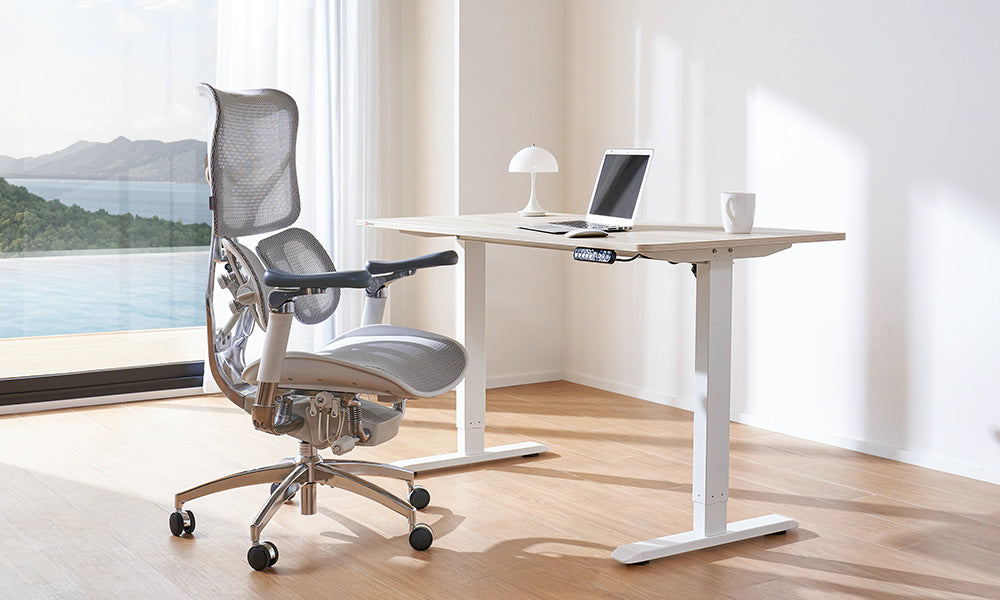When it comes to furnishing an office, the choice of seating is paramount. After all, the average office worker spends about 8 hours a day sitting, and the right chair can significantly impact comfort, productivity, and even health. Among the myriad options available, leather chairs often stand out as a popular choice. But are they really the best option for your office? Let’s dive into the pros and cons of leather chairs in an office setting.
The Aesthetic Appeal
One of the most compelling reasons many opt for leather chairs is their aesthetic appeal. Leather exudes a sense of professionalism and luxury. It can transform an ordinary office into an elegant workspace. Leather chairs come in various styles and colors, from classic black and brown to modern hues, making them versatile enough to fit any office decor. The sleek appearance of leather can impress clients and create a positive first impression, which is particularly important in fields where image and presentation matter.
Comfort and Ergonomics
Comfort is crucial for maintaining productivity and preventing health issues. Leather chairs are often praised for their comfort. High-quality leather is soft and supple, providing a comfortable seating surface. Many leather office chairs come with ergonomic features such as adjustable height, lumbar support, and tilt mechanisms. These features help reduce the strain on the back and neck, promoting better posture and reducing the risk of developing musculoskeletal problems.
However, it's important to note that not all leather chairs are created equal. The quality of the leather and the overall design of the chair play significant roles in determining comfort. Low-quality leather can be stiff and uncomfortable, and a poorly designed chair, regardless of the material, can lead to discomfort and health issues over time.
Durability and Longevity
Leather is known for its durability. A well-made leather chair can last for many years, even with daily use. Leather is resistant to punctures and tears, making it a practical choice for an office environment where furniture is subject to constant use. Over time, leather develops a unique patina, which many people find attractive. This aging process can add character to the chair and to the office as a whole.
However, maintaining leather chairs requires some effort. They need to be cleaned regularly to prevent stains and should be conditioned periodically to keep the leather supple and prevent it from drying out and cracking. Despite this maintenance, the longevity of leather chairs can make them a cost-effective choice in the long run, as they do not need to be replaced as frequently as chairs made from less durable materials.
Environmental and Ethical Considerations
In today’s world, environmental and ethical considerations are increasingly important. Leather is a natural material, but its production involves processes that can be harmful to the environment. The tanning process, in particular, uses chemicals that can pollute water sources. Moreover, leather production is linked to the meat industry, which raises ethical concerns for some people regarding animal welfare.
There are alternatives to traditional leather that address these concerns. For example, faux leather, made from synthetic materials, can mimic the look and feel of genuine leather while being more environmentally friendly and cruelty-free. However, the quality and durability of faux leather can vary, and it may not offer the same longevity as genuine leather.
Climate Control and Breathability
One potential downside of leather chairs is their reaction to temperature changes. Leather tends to absorb heat, which can make sitting in a leather chair uncomfortable during hot weather. Conversely, leather can feel quite cold in a chilly office. Breathability is another factor to consider. Leather does not breathe as well as fabric, which can lead to a sticky, uncomfortable feeling, especially in warm conditions.
Some modern leather chairs address these issues by incorporating ventilation features or using perforated leather to improve breathability. Additionally, ensuring your office has good climate control can mitigate these issues to a large extent.
Cost Considerations
Leather chairs tend to be more expensive than their fabric or mesh counterparts. This higher initial cost can be a deterrent, especially for small businesses or startups with tight budgets. However, considering the durability and longevity of leather chairs, the investment can be justified. A high-quality leather chair might outlast several cheaper chairs, making it a more economical choice over time.
For those who want the look and feel of leather without the high cost, bonded leather can be an option. Bonded leather is made from leather scraps bonded together with polyurethane. It is less expensive than full-grain leather but still offers a similar aesthetic. However, bonded leather is less durable and prone to peeling over time.
The Verdict: Are Leather Chairs Good for the Office?
Ultimately, whether leather chairs are a good choice for your office depends on your specific needs and priorities. Here are some key points to consider:
- Aesthetic Appeal: Leather chairs add a touch of elegance and professionalism to an office.
- Comfort and Ergonomics: High-quality leather chairs with ergonomic features can provide excellent comfort and support.
- Durability: Leather chairs are long-lasting and can withstand daily use, making them a good investment.
- Maintenance: Leather requires regular cleaning and conditioning to maintain its appearance and durability.
- Environmental and Ethical Concerns: Consider the environmental impact and ethical implications of using leather. Faux leather can be an alternative.
- Climate Control: Be mindful of temperature and breathability issues associated with leather chairs.
- Cost: While more expensive upfront, the longevity of leather chairs can make them cost-effective in the long run.
In conclusion, leather chairs can be an excellent choice for an office, provided you are willing to invest in quality and take care of them properly. They offer a blend of style, comfort, and durability that can enhance your work environment. However, it’s essential to weigh the pros and cons based on your specific circumstances and preferences to make the best decision for your office.






Laisser un commentaire
Ce site est protégé par hCaptcha, et la Politique de confidentialité et les Conditions de service de hCaptcha s’appliquent.